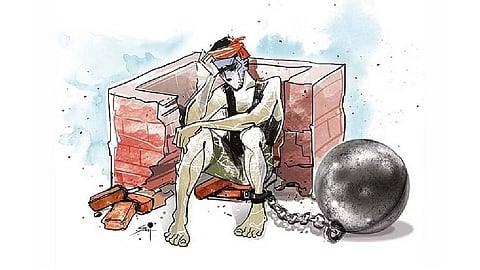

CHENNAI: Soon, the State Labour Department will come up with a comprehensive guide book on rescuing and rehabilitating bonded labourers for the law enforcing agencies. With the book, the department aims to increase conviction rate in these cases.
According to a senior official, only two cases ended in conviction in 2022. He said there were zero conviction from 2016 to 2019 even though more than 3,000 bonded labourers were rescued from 217 units.
“We want to improve the conviction rate. For that, we want well informed officials on the front. This book will come handy in educating the officials, besides having government orders related to bonded labour issues, “ said an official involved in the preparation of the book that will be circulated among all district collectors and heads of the government departments.
The 67-page book would also have the success stories of three of the bonded labourers, who were freed from generation of bondage and turned into a source of inspiration for their community. “We will soon publish the book, “ said another official.
The Tamil Nadu Legal Service Authority (TNLSA) has constituted a one-stop crisis team in each district to identify and rescue bonded labourers, while district administration formed district level vigilance committees. Though these mechanisms were working efficiently in many districts, the lack of awareness among the law enforcing agencies in registration of the case and collecting sufficient evidence paved the way for the employers of the bonded labourers to go scot-free.
Under the Centre’s scheme, the freed labourers are entitled for aid of Rs 1 lakh (male), Rs 2 lakh (female and minor) and Rs 3 lakh (special cases like disabled). While the freed labourer receives Rs 20,000 as immediate relief, the remaining amount is tied over the conviction of the perpetrator in the case.
“Majority of the victims of the bonded labour system are denied these benefits. The simple reason is that the charge sheet lacks concrete evidence to prove the victims were under bondage, while in several cases the police had failed to invoke the Bonded Labour System (Abolition) Act, “ said a senior bureaucrat.
Visit news.dtnext.in to explore our interactive epaper!
Download the DT Next app for more exciting features!
Click here for iOS
Click here for Android